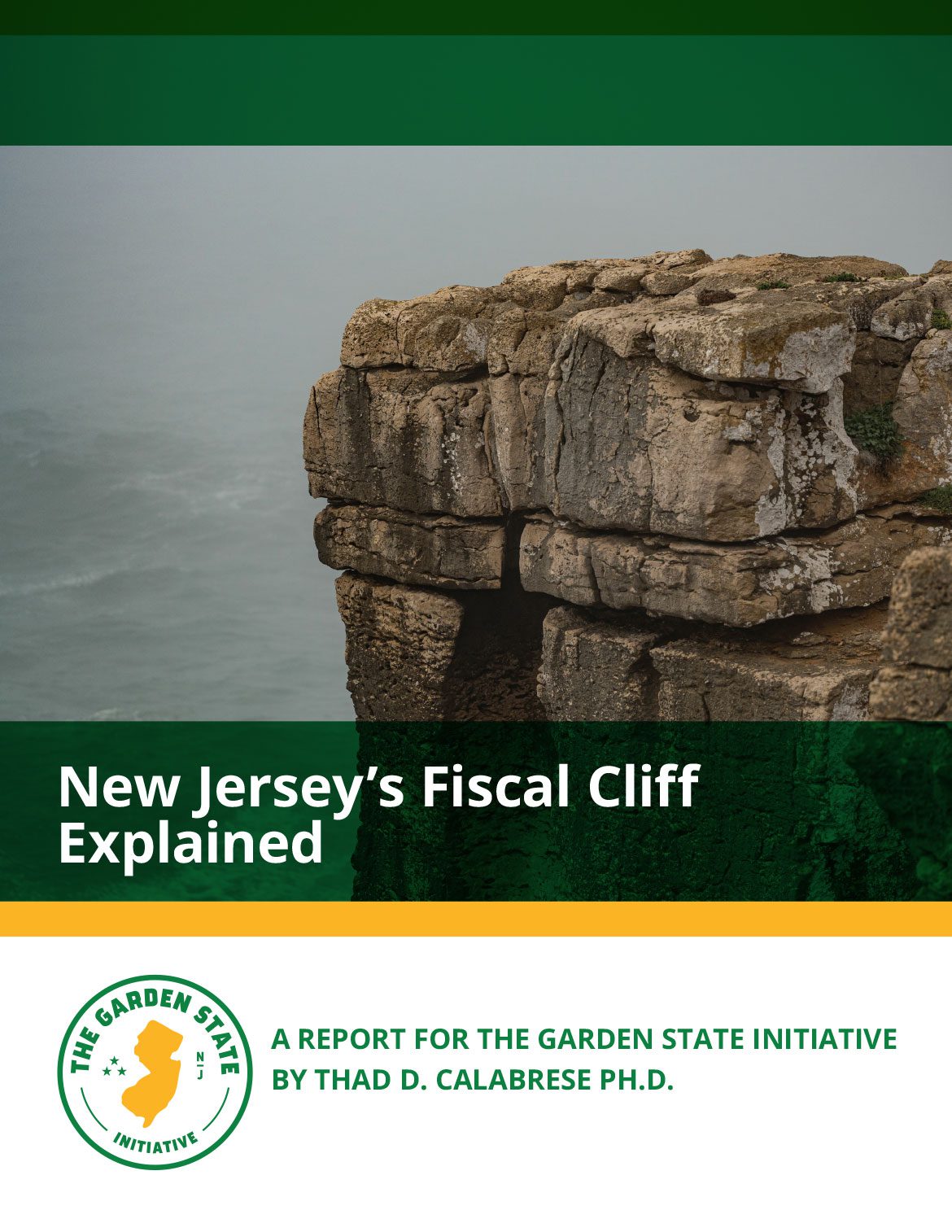Public Spending, GOVERNMENT THAT WORKS
Garden State Initiative Report: New Jersey on the Brink of a Fiscal Cliff

Leading think tank releases “New Jersey’s Fiscal Cliff Explained” and offers a six-point policy recommendation to lead the state back to economic solvency
In a comprehensive report that both details New Jersey’s significant, and largely self-inflicted, economic, and fiscal challenges, the state’s leading center-right think tank, Garden State Initiative, also outlined a series of fiscally responsible reforms.
“Our report not only identifies the very serious economic issues facing the state, but also provides a blueprint for how to address them in a pragmatic and specific way.” said GSI President Regina Egea noting that other states have implemented policy changes that could lead New Jersey back to economic solvency.
Partnering with GSI on the project was Professor Thad Calabrese, Professor of Public and Nonprofit Financial Management at the Robert F. Wagner Graduate School of Public Service at New York University where he currently serves as the head of the school’s finance specialization.
“New Jersey has done some positive things in recent years, like making full and on-time pension payments, but the growth in state spending –which increased nearly 30% over the past decade while population has stagnated and even declined – has the state at a tipping point.” said Professor Calabrese. “Despite receiving $8.5 billion of pandemic related federal aid, New Jersey policy makers failed to seize the opportunity for long-term investments that could have spurred greater economic growth, leading to lower taxes, pension reform, and infrastructure improvements.”
Calabrese and GSI pointed to the state’s much-lauded surplus, which they called “an artificial prop” that has misled the public about the reality of the state’s financial viability.
“While states like Pennsylvania and North Carolina – both with Democratic Governors and Republican legislatures – continue to make their states more hospitable to families, seniors, and business owners, New Jersey is going in the opposite direction. New Jersey’s Corporation Business Tax as well as major taxes on their employees have grown exponentially, making it more expensive to operate and undoubtedly discourages the creation of new jobs” noted Egea.
“For residents, our state’s gross overreliance on families making $250,000 or more – which can be a police officer married to a public-school teacher in this state – has become untenable. In 2011, these middle-class and above households contributed half of the state’s total gross income tax revenue; today, these same families make up two-thirds of that revenue. In short, accelerating reliance on these same families is not sustainable” explained Policy Director Audrey Lane.
Professor Calabrese, Lane, and Egea, said their report indicates that New Jersey will need to generate $5 billion in revenue over the next two to three years simply to meet the current level of spending. In order to achieve that, taxes will need to rise dramatically in one of three ways: 1) Significant income tax increases on every taxpayer earning more than $100,000 annually; 2) Doubling of the state’s already 4th highest in the nation corporate tax rate; or 3) Increasing the sales tax by roughly 40% from the current 6.625% to 9.1% – driving up the cost of everything from buying a new car to going out to dinner with ones’ family.
While the GSI report outlines an ominous snapshot of the state’s current financial outlook, it also spends considerable time outlining policy solutions including:
- Requiring the state to fund all recurring expenditures with recurring revenues. (No more borrowing from surplus or raising debt to allow higher state spending.)
- Moderating tax rates and bringing the state in line with others that are attracting businesses, residents, and higher wage jobs.
- Reform the state’s pension and retiree health insurance systems. The consumption of nearly 20% of total state revenues for public employee benefits is significantly higher than other comparable states.
- Reduce the cost of energy, infrastructure, and construction to address underlying drivers of our “unaffordability” for residents.
- Focus state spending on vital public services and reallocate any remaining funds that measurably increase the state’s attractiveness.
- End budgetary reliance on one-shot revenues and rolling surpluses, and work towards real structural budget stability.
“We have arrived at the fiscal cliff, but we haven’t gone over the edge yet,” concluded Professor Calabrese. “If the state’s policy makers take these and similar actions immediately, it will better align New Jersey with other states that are experiencing strong growth, reduce the state’s high debt burden, and make New Jersey’s public services fiscally sustainable. Such actions should decelerate the outmigration of businesses and individuals and improve the economic conditions of the state.”

